RoAD to the L4
Project on Research, Development, Demonstration and Deployment (RDD&D)
of Automated Driving toward the Level 4 and its Enhanced Mobility Services
自動運転レベル4等先進モビリティサービス
研究開発・社会実装プロジェクト
Significance
This project aims to promote a sustainable mobility society in light of significant developments in the automotive industry, such as CASE.
Through it we believe we can help lessen the negative effects on the environment, address, mobility issues, and boost the economic value of our nation by achieving and promoting advanced services at Level 4 and beyond.
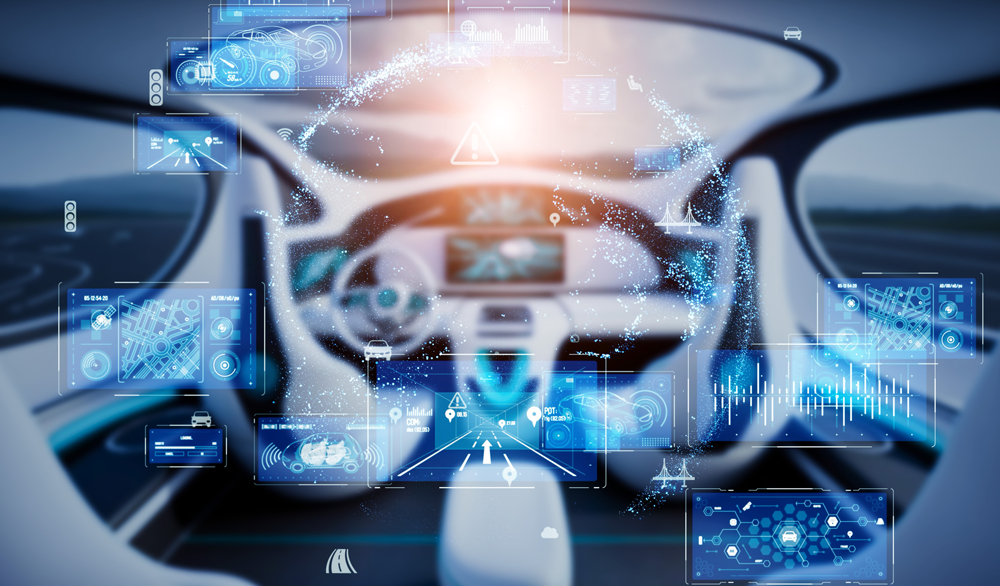
Goals and KPIs
Realization and Promotion of Services for Automated Driving
- commence Level 4 automated driving services with remote vehicle monitoring only in select areas starting in May 2023 [Achieved].
- introduce it in 50 locations by around FY2025 with region-specific driverless automated driving mobility services.
Widespread Adoption of New Mobility Services (MaaS) Utilizing the loT and Al
- lmplement innovative mobility services using the loT and Al nationwide to address local social challenges and stimulate regional development.
Talent Recruitment and Development
- Attract professionals across various fields, including technicians skilled in hardware and software, as well as individuals capable of aligning regional challenges with technological solutions.
Cultivate Social Acceptance
- Increase public awareness and interest in technologies like automated driving by disseminating information in an approachable manner, offering concrete hands-on opportunities, and outlining legal obligations, all with the goal of motivating behavior change.
Implementation Structure
- This project involves several individual projects for R&D and deployment of automated driving systems in public, shown in green on the right.
- A project coordinator has been assigned to the organization responsible for the comprehensive research and study of this project (coordinating organization).
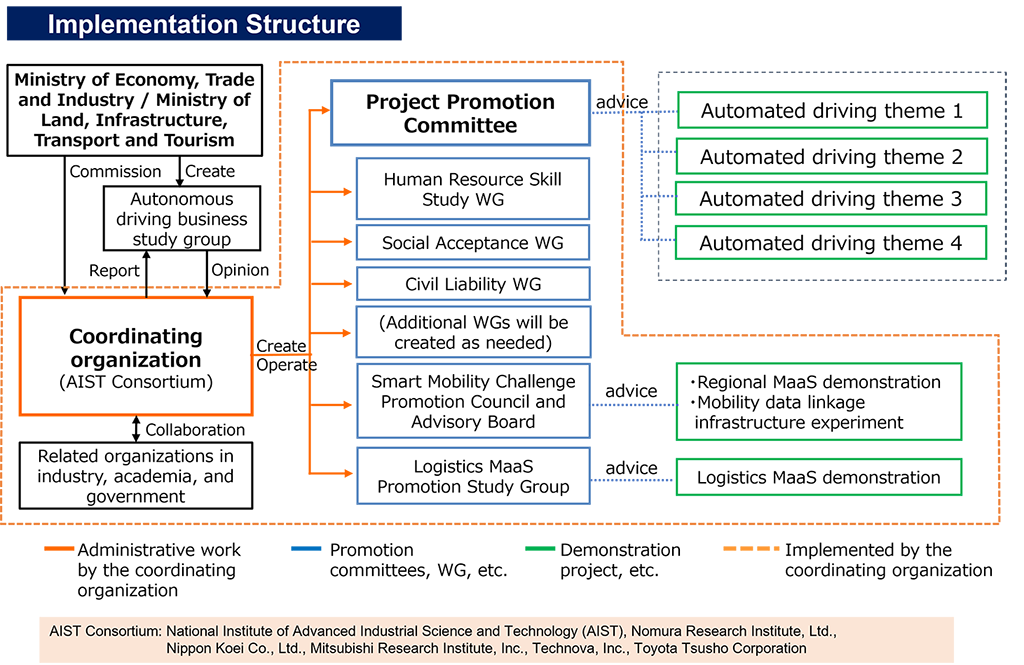
1. Proceeding of the L4 specific R&D project
We intend to go beyond technology development, research, and experimentation and are committed to initiatives aimed at the societal implementation of advanced mobility services, we proceed with 4 individual projects for R&D.
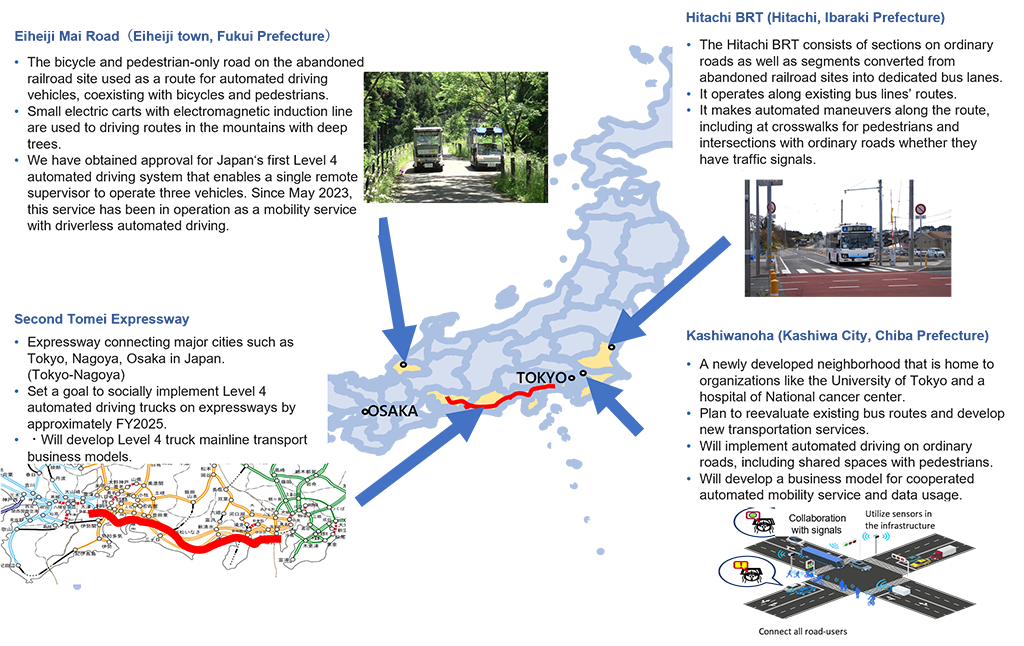
Theme1 Initiative for the realization of automated driving vehicles services with remote monitoring only(Level4)
- Designed and built automated driving systems and vehicles for mass production in Level 4 mobility services. Also created remote control and communication systems for multiple vehicles and performed technological testing.
- In FY2023, we verified reliability and other factors for long-term operations alongside actual operations.
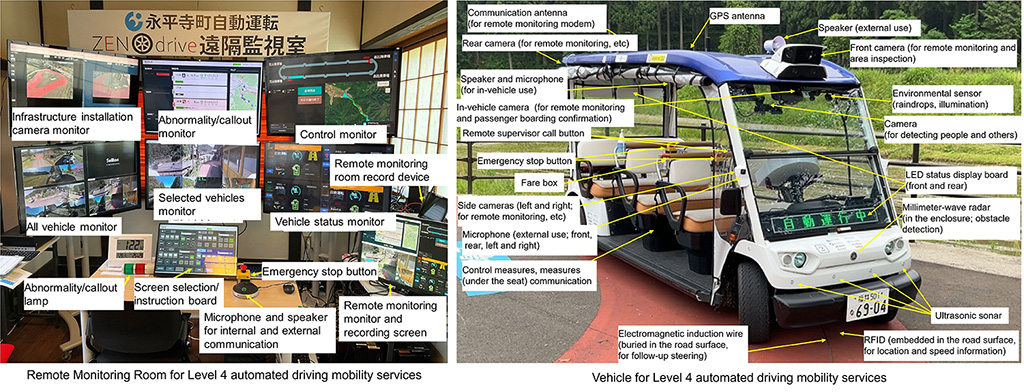
■Brief Introduction of Theme 1 (video, 2024)
This video is Japanese version. English version will be available soon.
Theme2 Initiative for target area and vehicle expansion and improvemet of business feasibility.
- By using virtual reality environments to recreate abnormal events and in-vehicle troubles, we could better understand the level of acceptance of automated buses and the importance of information presentation in interactions with remote supervisors.
- The goal for FY2024 was to implement Level 4 automated driving mobility services with crew-onboard buses, particularly in dedicated bus lane sections.
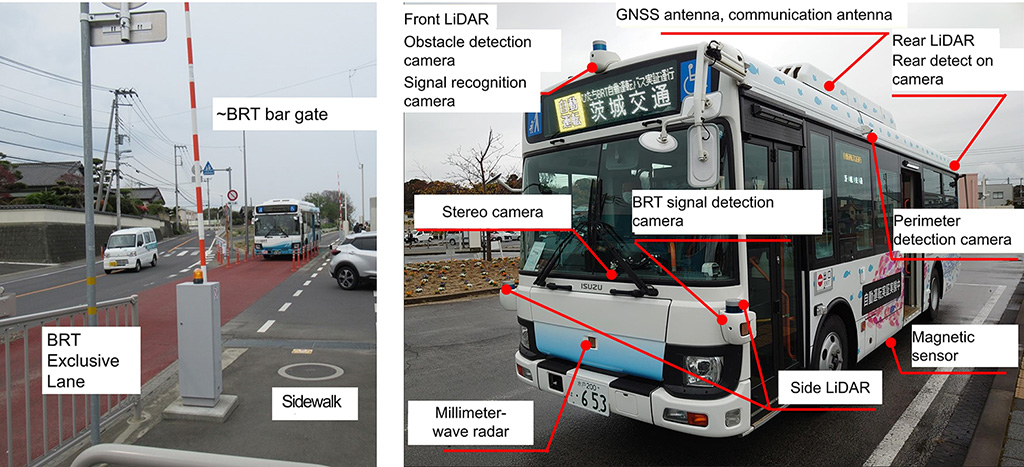
■Brief Introduction of Theme 2(video, 2024)
This video is Japanese version. English version will be available soon.
Theme3 Initiative for the realization of high-performance trucks on expressways, including platooning
- Analyzed business viability, including external support for vehicles, systems, and infrastructure.
- Examined requirements considering the characteristics of heavy-duty vehicles, setting the Operational Design Domain (ODD), evaluating multi-brand collaborative driving, establishing operation management and monitoring systems, and assessing the requirements for external support and regulatory development.
- Created Level 4 evaluation vehicles/systems for ODD verification based on technology derived from driverless platooning, as well as optimizing vehicle technology based on ODD.
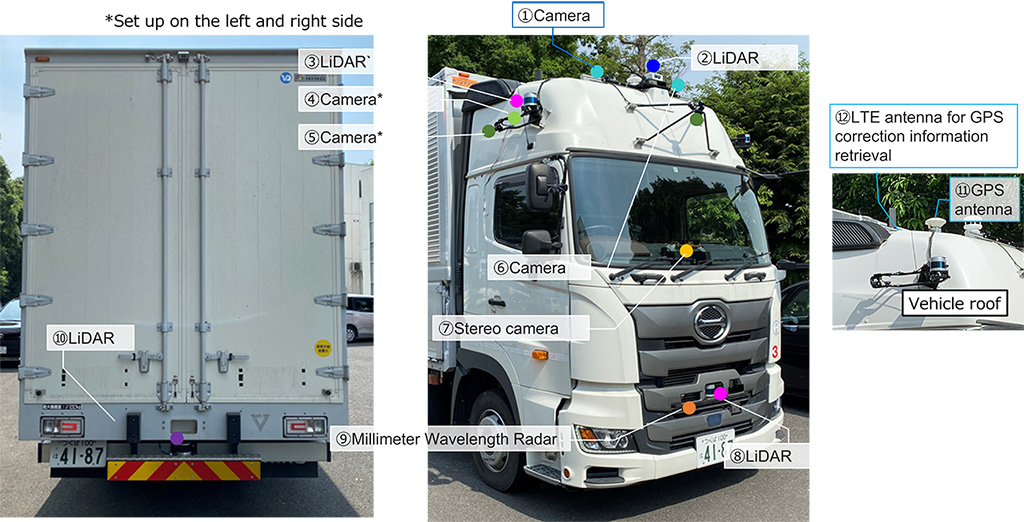
Theme4 Initiative for infrastructure cooperation and collaboration between vehicles and pedestrians to develop automated driving in a mixed space
- Examined the specifications for cooperative systems' vehicle- and infrastructure-related requirements as well as data integration plans and organization of use cases.
- On-road validation experiments on public roads starts from FY2023 and Sought to commercialize cooperative automated driving services after 2025 by investigating route planning and organizational structures.
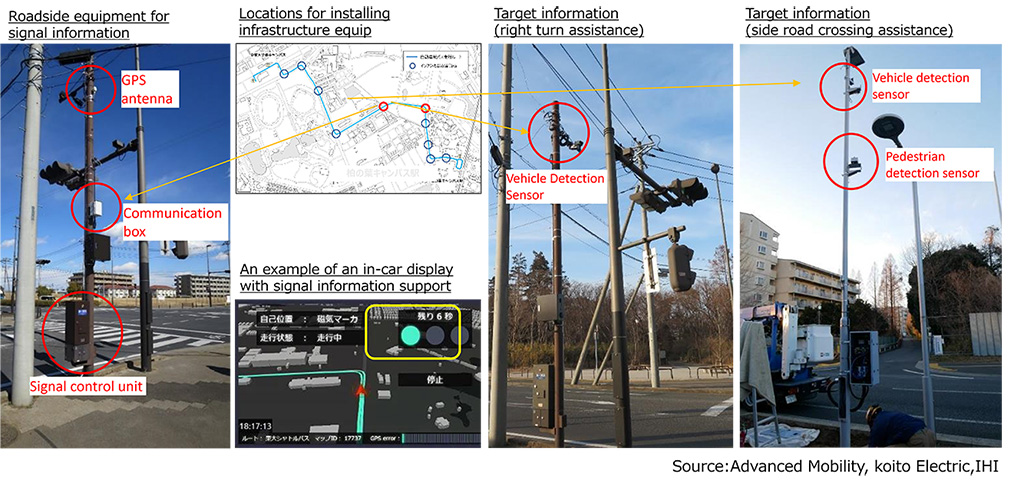
■Brief Introduction of Theme 4(video, 2024)
This video is Japanese version. English version will be available soon.
2. Investigation of Traffic Accident Criminal Court Cases for Development of Automated Driving Control System
- Organized regulations under the Road Traffic Law and analyzed past criminal court cases involving traffic accidents in order to reference specific cases in designing automated driving systems (defining risk scenarios, assessing risk, and studying measures to reduce risk.)
3. Development of Guidance for Social Implementation and Commercialization of Automated Driving Mobility Services
- We will work with operators across Japan who are involved in social implementation of Level 4 automated MaaS to exchange opinions, share information, and build consensus on safety assurance and business feasibility, which will be reflected in the guide.
- This guide is divided into two main sections: an "Introduction Section" to verify usage needs for areas newly developing mobility services, and an "Implementation Section" for those preparing to implement Level 4 automated driving mobility services in specific areas.
4. Organization of Expanded Task Force Implementation Status (TF)
- To promote the understanding of the procedure for the social implementation of automated driving MaaS, we share the authorization process, ways to distribute the responsibilities between operators, and proceeding examples with operators across Japan who are involved in social implementation of Level 4 automated MaaS.
5. Organization of Level4 Mobility Acceleration Committee
- In October 2023, the Ministry of Economy, Trade and Industry (METI), Ministry of Land, Infrastructure, Transport and Tourism (MLIT), and other organizations launched the Level 4 Mobility Acceleration Committee to develop an environment for the realization of new automated mobility services by promoting appropriate information sharing among service providers, related ministries and agencies, and facilitating the licensing procedures.
- The government aims to realize unmanned automated driving services in about 50 locations in Japan by FY2025, and new automated driving services in larger and more complex traffic environments are expected to begin in the future.
